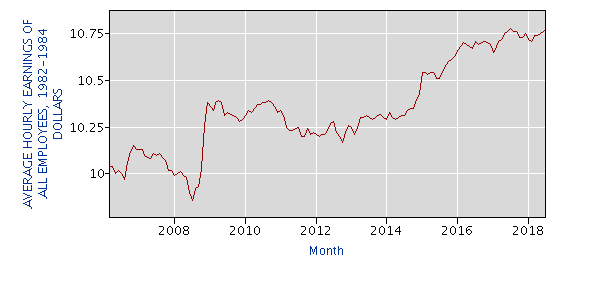NYT readers were no doubt disturbed to see a column in which former Fed Reserve Board chair Ben Bernanke, Obama Treasury Secretary Timothy Geithner, and Bush Treasury Secretary Henry Paulson patted themselves on the back for their performance in the financial crisis. First, as they acknowledge in the piece, all three completely failed to see the crisis coming.
During the years when house prices were getting way out of line with both their long-term trend and rents, Bernanke was a Fed governor, then head of the Council of Economic Advisers, and then Fed chair. He openly dismissed the idea that the run-up in house prices could pose any threat to the economy. Henry Paulson was at Goldman Sachs until he became Treasury Secretary in the middle of 2006. As the bank’s CEO he was personally profiting from the bubble as the bank played a central role in securitizing mortgage backed securities. Timothy Geithner was president of the New York Fed, where he was paid over $400,000 a year to make sure that the Wall Street banks were not taking on excessive risk.
It is bad enough that these three didn’t see the crisis coming, but they still seem utterly clueless. They tell readers:
“Productivity growth was slowing, wages were stagnating, and the share of Americans who were working was shrinking. That put pressure on family incomes even as inequality rose and upward social mobility declined. The desire to maintain relative living standards no doubt contributed to a surge in household borrowing before the crisis.”
Actually productivty growth didn’t begin to slow until 2006, as the bubble was hitting its peak. Growth was quite strong from 2000 to 2005, which means the cause of wage stagnation in those years must lie elsewhere. (If they had access to government trade data they might think the explosion of the trade deficit to 6.0 percent of GDP played a role.) The surge in borrowing clearly preceded the productivity slowdown as could be seen from the plunge in savings rates or reading the papers celebrating people pulling equity out of their homes by some guy named Alan Greenspan.
And then they tell us what a great job they did. After describing how they saved the Wall Street banks from collapsing from their own greed and incompetence (not in those words), they tell us:
“Policymakers certainly didn’t get everything right. But compared to most other countries, America’s post-2008 recovery started sooner, was completed faster and was built on healthier foundations.”
That claim is not at all clear from the data. If we look at wage growth, the story is far from impressive, as shown below.
Real Average Hourly Wage

Source: Bureau of Labor Statistics.
The real hourly wage peaked in the pre-crisis period at $10.15 an hour in November of 2006. In July of 2014, almost eight years later, the average hourly wage stood at $10.31, just 1.5 percent higher. That is not much to celebrate.
The story on employment looks even worse. The prime age (ages 25 to 54) employment to population rate (EPOP) peaked at 80.1 percent in the first quarter of 2007. It dropped as low as 75.0 percent and was still below 76 percent as late as the third quarter of 2013. By comparison, the EPOP for prime age workers fell by just 1.4 percentage points in Canada and by the third quarter of 2013 it was just 0.6 percentage points below its pre-recession peak. In Australia the EPOP was 1.3 percentage points below its pre-recession peak by the third quarter of 2013. In Germany it was 2.7 percentage points hgher than its pre-recession peak in the third quarter of 2013. It’s true that the U.S. has done better by most measures that Italy, Spain, and Greece, but that is not much of a boast.
The policies put in place also failed to protect homeowners, many of whom were both underwater in their mortgages and unemployed due to the recession. As a result, the homeownership rate fell from a peak of 69.4 percent in 2004 to a low of 63.0 percent in 2016. This is a rate not seen since the 1970s. It actually looks considerably worse when adjusting for the much older age of the population in 2016. There were alternatives that likely would have kept more people in their homes (such as giving underwater homeowners the right to stay in their home as renters), but this clearly was not as big a priority as rescuing the Wall Street banks.
Anyhow, it is good to see this trio warning about Republican efforts to once again weaken regulation of the financial industry, but it would be nice to see them take more responsibility for the incredibly serious failure that ruined millions of lives. Needless to say, all three of them are doing quite well financially.
This column originally appeared on Dean Baker’s Beat the Press blog.